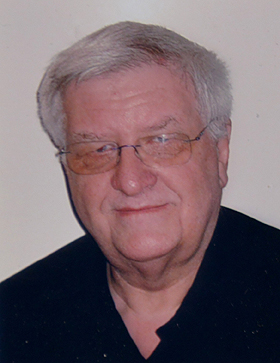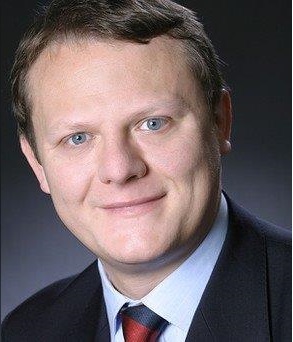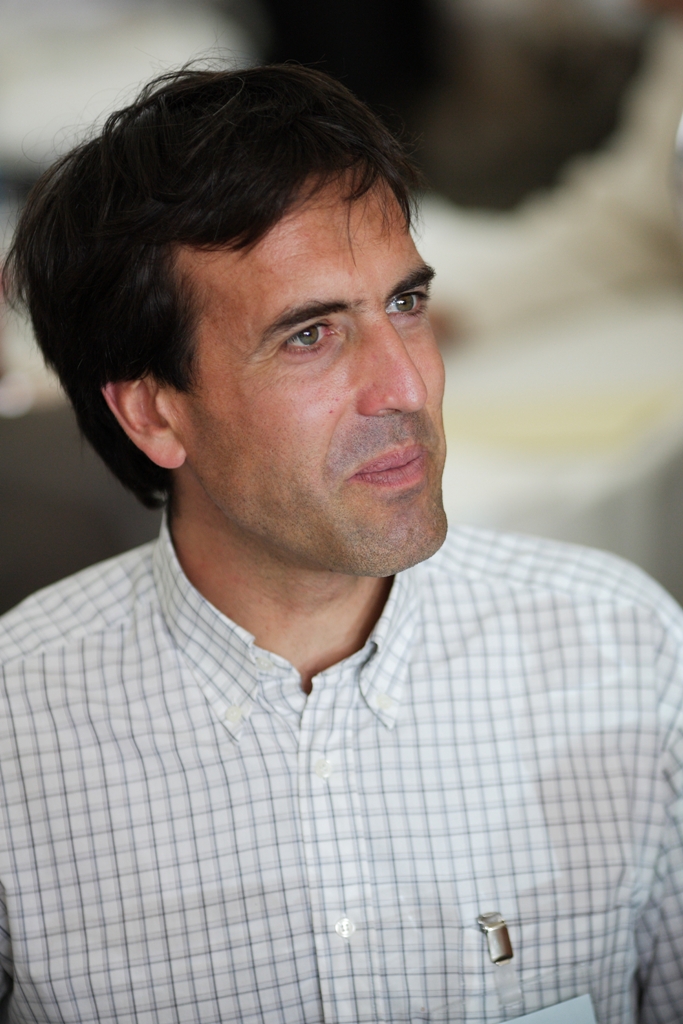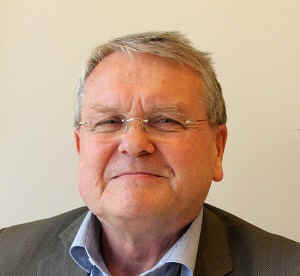|
Keynote
speakers
Confirmed
Keynote Speakers
 |
Professor
Emeritus Ove
T. Gudmestad
University
of Stavanger, Norway
Academic
Profile: http://www.uis.no/article.php?articleID=73778&categoryID=11198
Keynote
Lecture
Title:
Limitations
Related to Marine Operations in the Barents Sea
Abstract:
Marine
operations in the Barents Sea are operations carried out by the
oil and gas industry, fishing activities for cods and crabs and
other kinds of fish are ongoing, commercial transport as well as
personnel transport take place, including cruise traffic. Some
activities are normally ongoing year round; others are dependent
on limited weather windows. The
limitations for the marine operations are the special weather
conditions characterized by unpredictable Polar Low situations
during the fall, winter and spring seasons, cold temperatures
that also are causing sea spray icing and the potential for
drifting ice in certain parts of the Sea.
The
Polar Lows limit the predictability of suitable weather windows,
necessitating planning for emergency disconnection of marine
operations. The cold temperatures give rise to needs for
winterization of vessels and equipment. The icing limits the
possibility for operability of equipment and raises concerns as
to stability of certain kinds of vessels. Furthermore, possible
drifting ice represents a danger to any operations and needs to
be monitored carefully.
It
must also be realized that large distances combined with
challenging meteorological and oceanographic criteria represents
a concern for evacuation and rescue, should it be necessary to
abandon ships and platforms. The long distances to the locations
farthest away from shore are also out of reach of helicopter
assistance.
All
aspects listed above make it necessary to conduct hazard
identification studies and to include all relevant historical
knowledge in the sea “hazids”, prior to execution of marine
operations in the Barents Sea.
|
 |
Professor
Torgeir Moan
Norwegian
University of Science and Technology, NTNU/Norway
Academic
Profile: https://www.ntnu.no/ansatte/torgeir.moan
Keynote
Lecture
Title:
Integrity Management of Marine Structures
Abstract:
A
brief overview of integrity management of offshore structures
used for
production of oil and gas, ocean renewable energy and
other functions, is
given. In general, acceptable structural performance is achieved
by fulfilling serviceability and safety requirements in a broad
sense. Structural safety means absence of ultimate
failure under extreme environmental and accidental events, as
well as failure due to structural degradation. Numerical
models of loads, load effects, resistance form the basis for
design as well as the life cycle follow up. The initial data
about geometry, material properties, loads and predicted
behaviour are supplemented by data from the fabrication process
and operation; and imply “big data”. During operation a
digital twin of the physical structure is used in the decision
making. Predicted behaviour is subjected to
uncertainties relating to normal variability or human
errors that occur in the life cycle. Hence, structural
integrity management takes place under uncertainty. An important
issue is how normal uncertainties and human errors are dealt
with by ensuring competent
personnel, adequate safety margins to cover normal uncertainties
in design, adequate numerical methods, verification
and validation of numerical methods, including measures
of their inherent uncertainty, inspection, monitoring and repair
after fabrication and during operation. On
this basis, this paper focuses on the how numerical models
should be used in the life cycle management of offshore
structures to achieve serviceability and primarily safety.
|
 |
Professor
Demosthenes
Polyzos
University
of Patras, Greece
Academic
Profile: Demosthenes Polyzos
is Professor of
the Department of Mechanical Engineering & Aeronautics,
Division of Applied Mechanics and Biomechanics of the University
of Patras in Greece. His research activities include wave
propagation phenomena in materials and structures, computational
mechanics, Boundary Element Method, Meshless Methods, modeling
in non--destructive testing, homogenization techniques,
mechanics of materials and biomaterials with microstructural
effects and computational methods in engineering and
bioengineering. He is organizer of many National and
International Conferences and
Principal Investigator in many National and EU projects.
His contribution includes 85 articles in International Refereed
Journals, 21 articles in books and 110 articles in proceedings
of International and National Conferences. He is recipient of
P.S. Theocharis award by the Academy of Athens and S.N. Atluri
medal in recognition of his “outstanding contributions to
boundary element methods in general”. He is Distinguished
Fellow of the International Conference in Computational and
Experimental Sciences and invited speaker in many Universities,
Conferences and Institutes. Currently is Vice Rector of Research
and Development of the University of Patras and President of the
Special Account of Research Funds and responsible for the Unit
of Research, Innovation & Entrepreneurship of the University
of Patras.
Keynote
Lecture
D.
Rodopoulos, S.V. Tsinopoulos, D. Polyzos
Title:
Boundary Element Method (BEM) solution for large scale cathodic
protection problems
Abstract: Cathodic
protection techniques are frequently used for avoiding corrosion
sequences in offshore structures. The Boundary Element Method
(BEM) is an ideal method for solving such problems because requires only the meshing of the boundary and not the
whole body of the structures as the FEM does. This advantage
becomes more pronounced in cathodic protection systems since
electrochemical reactions occur mainly on the surface of the
metallic structure. The present work aims to solve numerically a
cathodic protection problem for a large offshore platform. The solution of that large scale problem is
accomplished by means of “PITHIA Software” a BEM package enhanced by Hierarchical
Matrices (HM) and Adaptive Cross Approximation (ACA) techniques
that accelerate drastically the computations and reduce memory
requirements. The potential and the current density at all the
surface of the platform are effectively evaluated, while the
accuracy of the utilized BEM software is assessed through
numerical and experimental benchmark problems taken by the
literature.
Keywords: Cathodic protection, Offshore structures, Boundary
Element Method, Hierarchical Matrices, Adaptive Cross
Approximation, Large Scale Problems.
|

|
Prof.
dr. sc. Hrvoje Jasak, dipl. ing.
University
of Zagreb, Croatia
Academic
Profile: Numerical simulation methods (FVM and FEM),
specifically Computational Fluid Dynamics Co-author of
FOAM/OpenFOAM, open-source C++ computational continuum mechanics
library Object-oriented design, expert C++ programmer,
Unix/Linux, high-performance computing Adaptive error control,
dynamic mesh handling; multi-phase and free-surface flows,
turbulence modelling and LES numerics, non-linear solid
mechanics and fluid-structure interaction Numerical simulations
in naval hydrodynamics: free surface CFD Lecturing and
post-graduate student supervision, OpenFOAM training and
consultancy
See
also: http://titan.fsb.hr/~hjasak/
Keynote
Lecture
Title:
CFD
Analysis in Subsea and Marine Technology
Abstract:
Accurate
evaluation of design conditions for engineering equipment in a
sub-sea and off-shore environment brings numerous challenges.
The loads originate from transient, stochastic and highly
non-linear free surface flow, (eg. wave impact). Structural
response is sought for objects undergoing 6-degrees-of-freedom
(6-DOF) motion and deformation.
Experimental
evaluation of loads is just as challenging, due to scaling
effects and effort of reproducing realistic sea state in a
controlled environment. Imprecise evaluation of structural loads
may lead either to unnecessary increase in cost or
succeptability to catastrophic failure.
Computational Fluid Dynamics offers a promise of accurate and
predictive evaluation of loads, combining free surface flow
model, 6-DOF motion and Fluid-Solid coupling. In this
talk, we shall present state of the art of CFD in modelling of
regular, irregular and freak waves and its interaction with
static and floating structures under mooring or propulsion using
OpenFOAM and the Naval Hydro Pack. The work aims to address the
challenges of irregular sea state modelling, wave impact and
fluid-solid coupling in different frameworks, with examples of
simulations and road-map of future challenges.
|

|
Professor
Trond Kvamsdal
Norwegian University of Science and Technology, NTNU/Norway
Academic
Profile: Trond
Kvamsdal is Professor in Computational Mathematics at Department
of Mathematical Sciences, NTNU, Trondheim, Norway. Professor
Kvamsdal is developing new theories/methods within Applied
Mathematics and Numerical Analysis to obtain robust and
efficient numerical software programs for challenging
applications in science and technology. Main area of application
is Computational Mechanics, i.e. both Solid/Structural and Fluid
Mechanics relevant for Civil, Mechanical, Marine, and Petroleum
Engineering as well as Biomechanics, Geophysics and Renewable
Energy.
See
also: http://www.ntnu.edu/employees/trond.kvamsdal
Keynote
Lecture
Title:
Isogeometric
Methods for Offshore Applications
Abstract: The
isogeometric analysis approach developed by Hughes et al.
originally presented in 2005 is based on B-Splines and NURBS
(Non-Uniform Rational B-Splines), a standard technology employed
in CAD systems. They propose to match the exact CAD geometry by
NURBS surfaces, and then construct a coarse mesh of spline
elements. The term "isogeometry" originates from
combining the concept of isotropic mapping in the finite
element method with spline basis functions as common in
computational geometry.
A
framework for performing isogeometric linear and non-linear
finite element analysis with Splines and NURBS as basis
functions was developed through the ICADA (Integrated
Computer-Aided Design and Analysis) project managed by SINTEF
and in collaboration with NTNU Dept. of Mathematical Sciences
and Dept. of Structural Engineering.
We
will present results obtained within the ICADA project as well
as from some of the following up projects. Key word here is
adaptive isogeometric methods for 2D plane stress/strain
elements, 3D volume elements as well as thin plate elements.
In
particular, for thin plates (and shells) that are commonly used
structural elements in ships and offshore structures, the whish
for C1-continuous basis functions is easily achievable using
splines as basis functions. We will show accurate isogeometric
analysis of some real world offshore problems, as e.g.
contact between a subsea oil pipeline and trawl gear from a
fishing vessel.
|

|
Professor
Johan Õlvander
University of Linköping, Sweden
Academic
Profile: Dr.
Johan Ölvander is Professor in Machine Design at Linköping
University
in Sweden. Professor Ölvander presented his dissertation in
2001
entitled Multi-objective optimization in engineering design, and
he
has since then been an active researcher within the broad field
of
applied
CAE (Computer-aided Engineering), in particular simulation based
optimization. His research
is
conducted in close collaboration with industry. Dr. Ölvander is
the
author
of more than 100 publications and he has supervised 8 PhD
students. See
also: https://www.iei.liu.se/machine/johan-olvander?l=en
.
Keynote
Lecture
Title:
Challenges
and Possibilities of Industrial Multi-Disciplinary
Optimization
in the Era of Digitalization
Abstract:
From
an academic perspective, Multi-Disciplinary Optimization has
been
around
for decades, but it has not yet had a great impact on industry.
With
the rapid development in the era of digitalization this is about
to
change dramatically. This presentation highlights recent
advancements
in the area of MDO and what impact they would have on
industry
in the years to come.
|

|
Olivier
Flamand, Researcher
Centre scientifique et technique du bâtiment (CSTB), Nantes,
France.
Academic
Profile: Olivier
Flamand is Head of Research and Expertise Pole in
Climatology, Aerodynamics, Pollution and Purification, at the
Scientific and Technical Centre for Buildings (Centre
scientifique et technique du bâtiment, CSTB) in Nantes. At this
French national institute, he has several decades of experience
leading the wind tunnel, full-scale and numerical studies into
wind effects on slender structures. His project work and
research focus strongly on long-span bridges and the vibration
of suspension and stay cables. The project references include:
Normandy Bridge (1995), Millau Viaduct (1991-2004),
Rion-Antirion Bridge(2000-2004), Russky Island
Bridge(2010-2012), 3rd Bosphorus crossing (2011-2014). Olivier
is secretary of the French wind engineering association, AIV , a
member of the French civil engineering body AFGC and the
research body LiRGeC.
See
also: https://www.researchgate.net/profile/Olivier_Flamand
Keynote
Lecture
Title: Challenges
in wind tunnel modelling of wind engineering problems
Abstract:
Wind
engineering is commonly associated with the wind tunnel
experiments at a reduced scale. This introduces several
limitations and calls for a careful planning of the tests and
the interpretation of the experimental results. The talk will
first revisit the similitude laws and discuss how they are
actually applied in wind tunnel tests. It will also remind the
listeners why different scaling laws are governing in different
wind engineering problems. In a second part, the lecture will
focus on the ways to simplify a detailed structure (bridge,
building, platform) when fabricating the downscaled models for
the tests. This will be illustrated with several examples from
the recent engineering projects. Regarding the simulation of the
extreme climate to study the resistance of manmade structures,
some climatic wind tunnel experiments will be briefly presented.
|

|
Professor
Bjørn H. Hjertager
University
of Stavanger, Norway
Academic
profile: http://www.uis.no/article.php?articleID=74028&categoryID=11198
Keynote
Lecture
Title:
Multi-fluid
CFD Analysis in Process Engineering
Abstract:
An
overview of modeling and simulation of flow processes in
gas/particle and gas/liquid systems are presented.
Particular emphasis is given to computational fluid
dynamics (CFD) models that use the multi-dimensional multi-fluid
techniques. Turbulence modeling strategies for gas/particle
flows based on the kinetic theory for granular flows are given.
Sub models for the interfacial transfer processes and chemical
kinetics modeling are presented.. Examples are shown for some
gas/particle systems including flow and chemical reaction in
risers as well as gas/liquid systems including bubble columns
and stirred tanks.
|

|